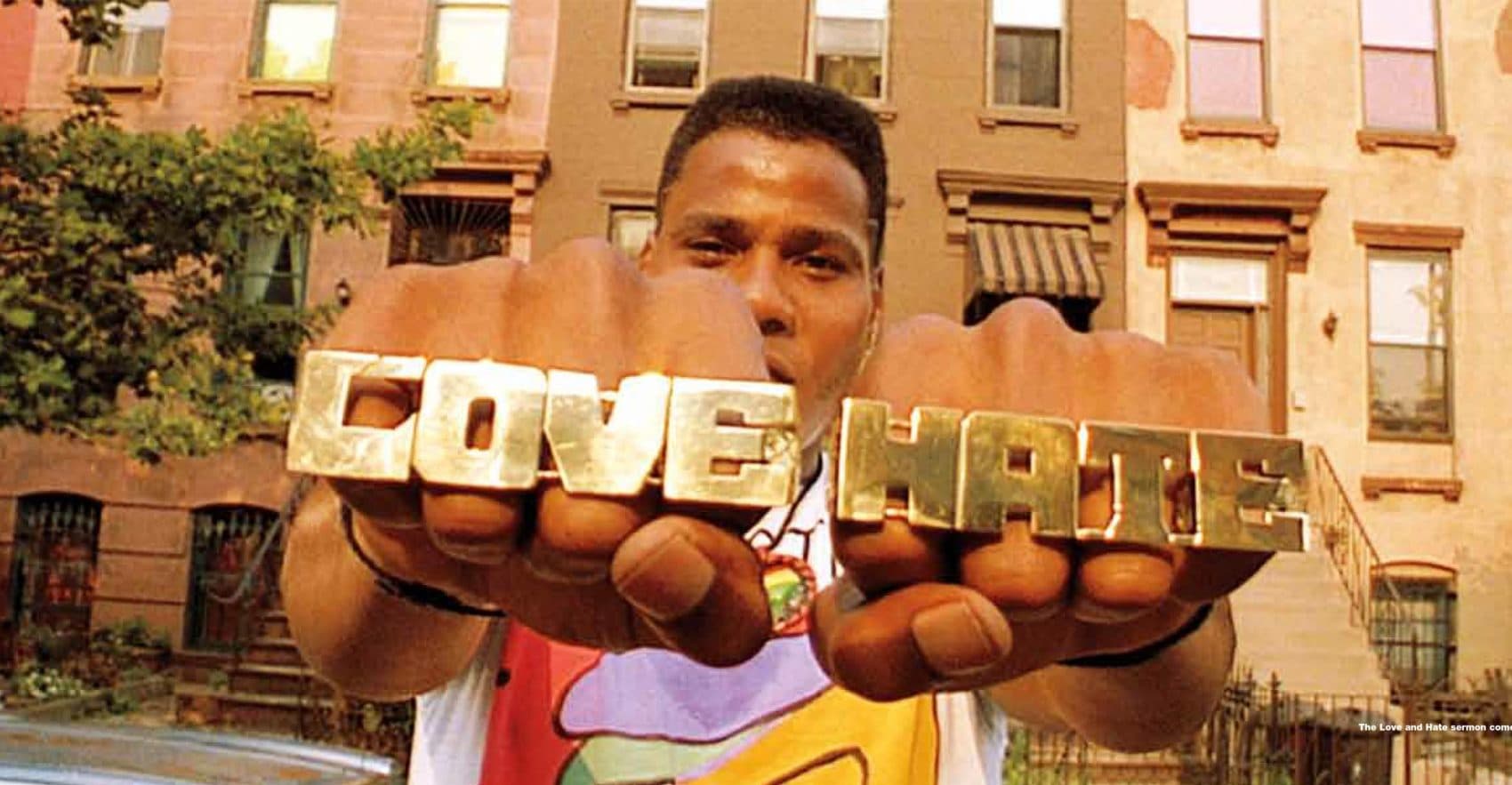Advertisement
Review
'Do The Right Thing's' Exploration Of Racial Tension Is, Unfortunately, Always Timely

Over the nearly three decades since its release, Spike Lee’s “Do the Right Thing” has been called irresponsible and it’s been called essential. Some critics and columnists have decried the film as an incitement to violence, while others say it’s one of the great American movies of our time. To this day it remains a knotty, conflicted, singular work of art that continues to prod and provoke audiences whenever it is shown. What it’s never been is untimely.
In this of all years, “Do the Right Thing” is a bitterly ironic way to ring in the Fourth of July. A 35mm print will screen Monday night as part of the Harvard Film Archive’s summer “Cinema of Resistance” series, with programmer David Pendleton leading a discussion after the film. Pendleton explains in the program notes: “Cinema has always been a method of examining the world the way it is, in order to understand it, to begin to change it, to imagine it otherwise. So we begin a monthly series of films animated with the spirit of protest, of pointing out oppression and working towards justice.”
I thought about “Do the Right Thing” a lot over these past weeks following the verdict that found a police officer not guilty in Philando Castile's death. I thought a lot about it during the Ferguson protests, and I’ve thought about it every time another camera phone video of a young black man being killed by police goes viral. In 1989 the movie was received almost like a work of journalism, with the hotshot young firebrand director Lee reporting on racial tensions in New York City’s outer boroughs that had been spilling over into bloodshed. But as time has gone on and the specific references dated, the movie has become something more universal. It’s the richest and most thorough cinematic exploration of an American ailment I fear may eventually be the end of us.
It’s also hilarious — a bawdy, ghetto re-mix of “Our Town” complete with Samuel L. Jackson’s friendly neighborhood disc jockey dropping rhymes as a de facto stage manager. Set during the hottest day of the year on the liveliest block in Brooklyn’s Bedford-Stuyvesant, the movie follows a bustling collection of colorful characters all bumping heads and busting chops as they try to beat the heat. For about 90 minutes or so, “Do the Right Thing” is a scabrously funny human comedy that looks with kindness upon this gallery of hotheads, screw-ups and folks just doing their best to get by.
Most of the action revolves around Sal’s Famous Pizzeria, a neighborhood staple owned by a gentle, aging Italian from nearby Bensonhurst (Danny Aiello), who runs the joint with his two knucklehead sons (John Turturro and Richard Edson). Their lone employee is a deliveryman named Mookie, a mouthy deadbeat dad played by the director himself. A local raconteur who calls himself Buggin’ Out takes offense to the lack of African-American representation on Sal’s "Wall of Fame" -- the photographs of Sinatra, De Niro and Pacino that adorn most pizza places in New York and elsewhere. It’s a pretty silly thing to get upset about, but hundred degree temperatures have a way of exacerbating even the smallest slights, and Lee depicts the unnecessary escalations over the course of this very long day with mounting anxiety.
Before the next morning a young man will be dead and the neighborhood in flames.
Lee was widely criticized for ending the movie with seemingly contradictory quotes from Martin Luther King Jr. and Malcolm X. (The two slain civil rights leaders loom large over the film, with photographs of them together sold by Smiley, a mentally handicapped man who serves as something of the movie’s town crier.) That response is indicative of depressingly common misconception that art, particularly when it involves social issues, should be prescriptive instead of descriptive. Most discussions of “Do the Right Thing” inevitably get bogged down in arguments over whether or not the movie itself endorses the actions depicted onscreen, a conversation complicated by the director himself playing the character who initiates the riot.
It has always seemed to me that if Spike Lee had any idea how to solve the systemic problems and inherent conflicts of race and class that this film so artfully illuminates, then he wouldn’t have had to make a movie about them. What makes “Do the Right Thing” a masterpiece is its embrace of those inherent contradictions, and its depiction of a day during which everyone thinks they’re doing the right thing and everything still goes to hell anyway.
I rewatch this movie pretty much every summer and I’m always elated by the swagger of Lee’s in-your-face filmmaking. The blistering colors of Ernest Dickerson’s cinematography make you sweat in an air-conditioned movie theater. I love how the broad theatricality of the performances and heavily stylized production design feel more like guerrilla street theater than crusty old cinematic realism. “Do the Right Thing” is still so electrifying and alive, and it echoes through the generations with a resounding question asked by Jackson’s DJ Senor Love Daddy that feels more urgent to me with each passing year: “Are we gonna live together, together are we gonna live?”


